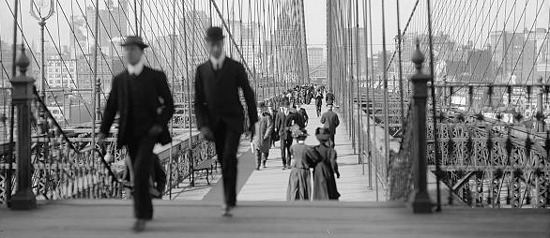
Courtesy of Library of Congress
SERIES
Making Movies in New York: 1911
June 4–5, 2011Organized by consulting curator Richard Koszarski, author of Hollywood on the Hudson
One hundred years ago, New York was the center of the American movie business. The technology may have been invented by Thomas Edison in West Orange but within a few years most of the new industry’s operations had moved to Manhattan, where talent, finance, and the roots of the nation’s theatrical and vaudeville circuits all came together. As D. W. Griffith said years later, this was where “the money and the brains were.”
Edison had created an industry-wide trust whose business plan regulated competition and hauled any “independent” producers into the courts. Yet piracy flourished, foreign competitors dominated the market, and reformers targeted not only the disreputable nickelodeons, but the increasingly sophisticated films that audiences were finding there.
Making Movies in New York: 1911 is the first installment of an annual look at our local film industry a century ago. While New York may not always be the subject, its cosmopolitan sensibility, even when producing Civil War epics or one-reel adaptations of Dickens or Ibsen, is never far from the surface. To some degree, in 1911 these studios turned to history and literature in order to demonstrate that whatever the critics might say, the movies—if not actually good for you—were certainly not to be sneered at. But from our perspective, the real history lesson lies in the films themselves, and the development of a new art form: one hundred years later, we can still watch as this city, and the men and women who were drawn to it, methodically goes about the business of setting down rules for a new century.
(About the The Palisadian article) On D.W. Griffith directing The Battle on location in Fort Lee: this is the earliest published account of Griffith directing.





